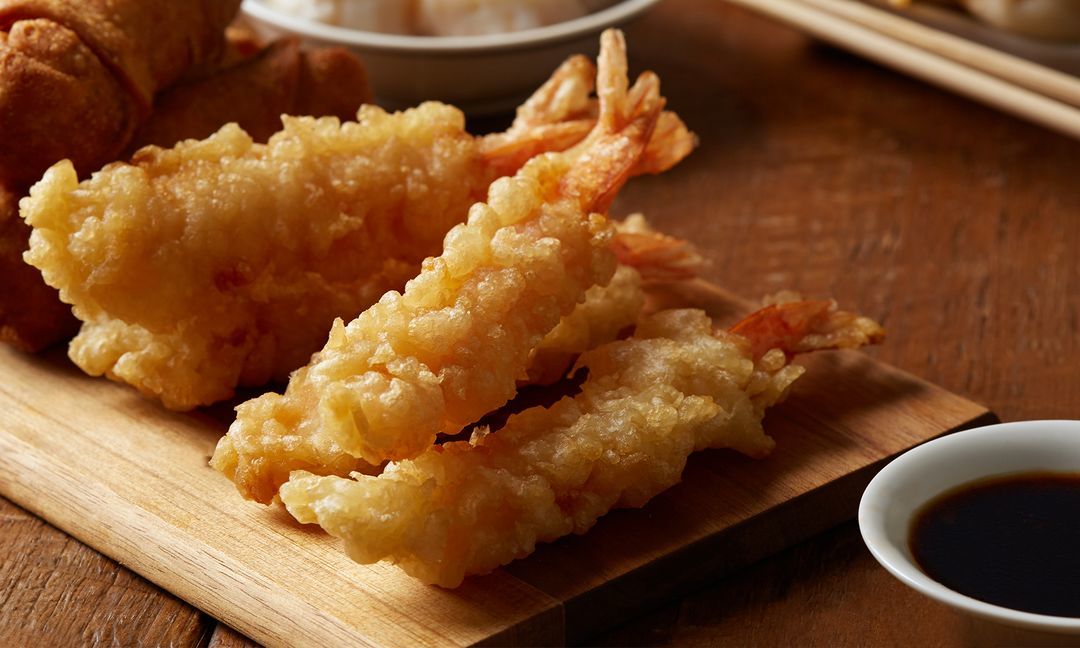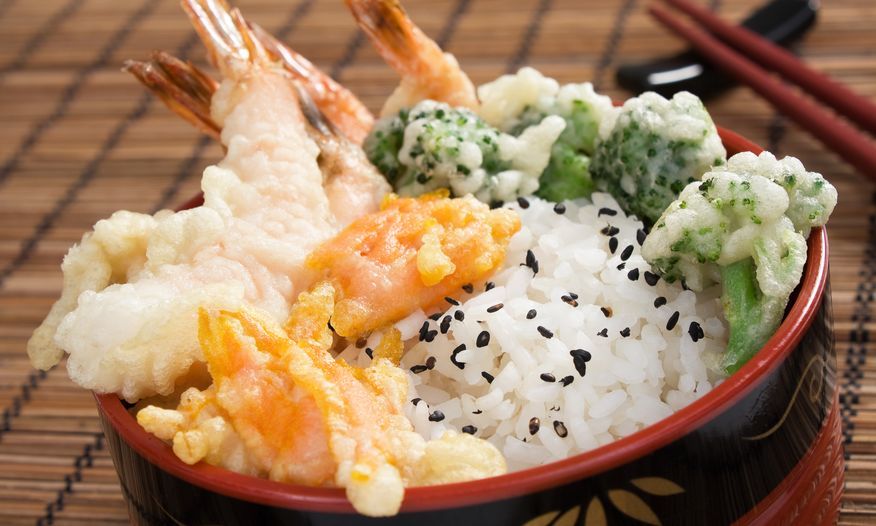GROUPON GUIDE TO CHICAGO
What Is Tempura? A Crispy, Crunchy Japanese Art
BY: Editors |Sep 12, 2018
Japanese Restaurant Deals

Trending
Enjoy $50 Toward Sushi and Drink at Dine-In at Runa Izakaya
7138 183rd Street, Tinley Park • 23.8 mi
28% discount_off
Runa Izakaya

Authentic Japanese Cuisine at Aodake Sushi & Steakhouse
2129 75th St., Darien • 21.3 mi
50% discount_off
Aodake Sushi and Steak House - Darien

Trending
Enjoy a $40 Dinner Experience at Todoroki from Sunday to Thursday
526 Davis Street, Evanston • 11.8 mi
44% discount_off
Todoroki Hibachi and Sushi

Trending
Taste authentic Japanese cuisine with $25 or $50 options
2255 West North Avenue, Chicago • 3.7 mi
30% discount_off
Izakaya Shinya

Up to 40% Off on Japanese Cuisine at Runa Izakaya
7138 183rd Street, Tinley Park • 23.8 mi
40% discount_off
Runa Izakaya

Enjoy $25 Worth of Japanese Cuisine in a Vibrant Setting
207 North Randall Road, Batavia • 37.0 mi
28% discount_off
Swordfish

Up to 20% Off on Sushi Restaurant at Kirin King Asian
446 West Virginia Street, Crystal Lake • 44.1 mi
20% discount_off
Kirin King Asian

Savor a Full Sushi Meal with Classic Rolls at Runa Izakaya in Miami
7138 183rd Street, Tinley Park • 23.8 mi
38% discount_off
Runa Izakaya
Asian Restaurant Deals

Pad Thai or Red Snapper & Drink for 2 | $30 or $60 Toward Food & Drink
4825 North Western Avenue, Chicago • 7.0 mi
17% discount_off
Madame Puffs and Thai Bistro

Trending
Indulge in a 7-Course Peking Duck Feast for Two at Lao Sze Chuan
520 Michigan Avenue, Chicago • 0.8 mi
38% discount_off
Lao Sze Chuan

Single Diner Special, Dinner for Two, Family & Group Feast, and More
2002 South Wentworth Avenue, Chicago • 1.8 mi
33% discount_off
Noodleverse 面八方

Trending
Enjoy $50 Toward Sushi and Drink at Dine-In at Runa Izakaya
7138 183rd Street, Tinley Park • 23.8 mi
28% discount_off
Runa Izakaya

Authentic Japanese Cuisine at Aodake Sushi & Steakhouse
2129 75th St., Darien • 21.3 mi
50% discount_off
Aodake Sushi and Steak House - Darien

Trending
Enjoy a $40 Dinner Experience at Todoroki from Sunday to Thursday
526 Davis Street, Evanston • 11.8 mi
44% discount_off
Todoroki Hibachi and Sushi

Taste authentic Japanese cuisine with $25 or $50 options
2255 West North Avenue, Chicago • 3.7 mi
30% discount_off
Izakaya Shinya

Savor Delicious Vietnamese Cuisine at Pho Home 2
2360 North Neva Avenue, Chicago • 9.8 mi
28% discount_off
Pho Home 2

Up to 40% Off on Japanese Cuisine at Runa Izakaya
7138 183rd Street, Tinley Park • 23.8 mi
40% discount_off
Runa Izakaya

Experience Authentic Vietnamese Cuisine With Our Voucher Offer
4626 N Harlem, Harwood Heights • 11.1 mi
20% discount_off
Pho Home

Enjoy $25 Worth of Japanese Cuisine in a Vibrant Setting
207 North Randall Road, Batavia • 37.0 mi
28% discount_off
Swordfish

Up to 20% Off on Sushi Restaurant at Kirin King Asian
446 West Virginia Street, Crystal Lake • 44.1 mi
20% discount_off
Kirin King Asian

Savor a Full Sushi Meal with Classic Rolls at Runa Izakaya in Miami
7138 183rd Street, Tinley Park • 23.8 mi
38% discount_off
Runa Izakaya




